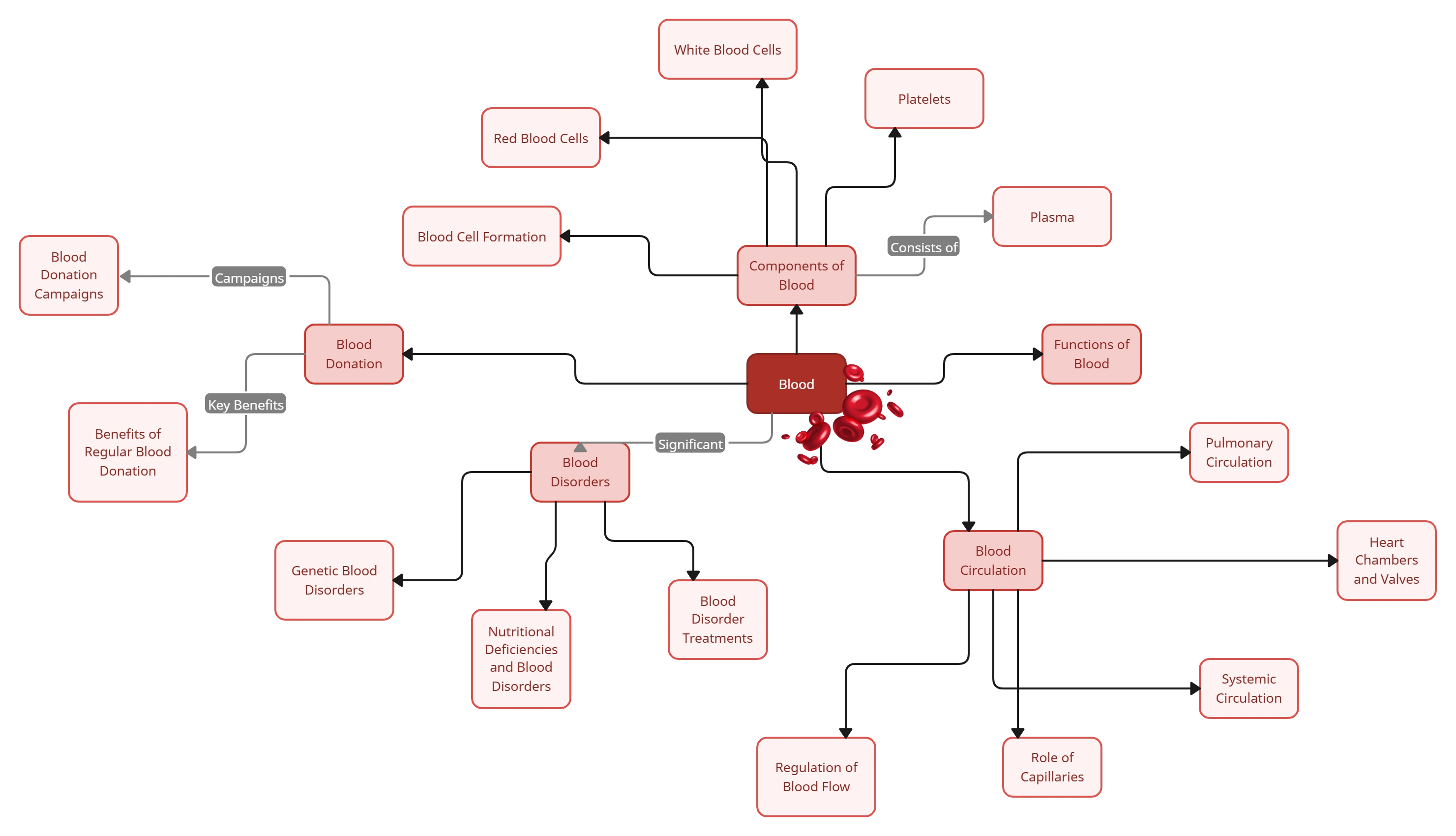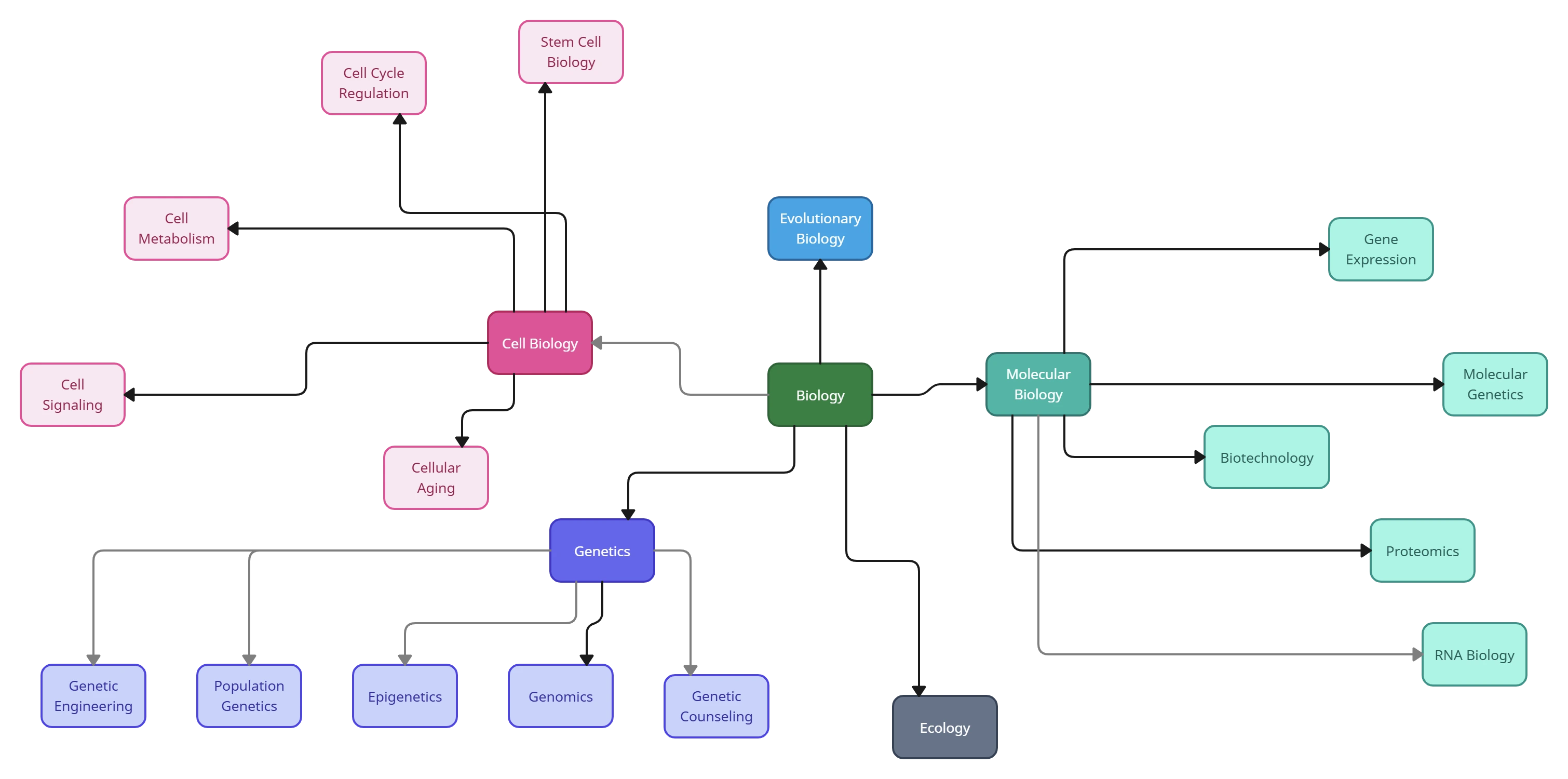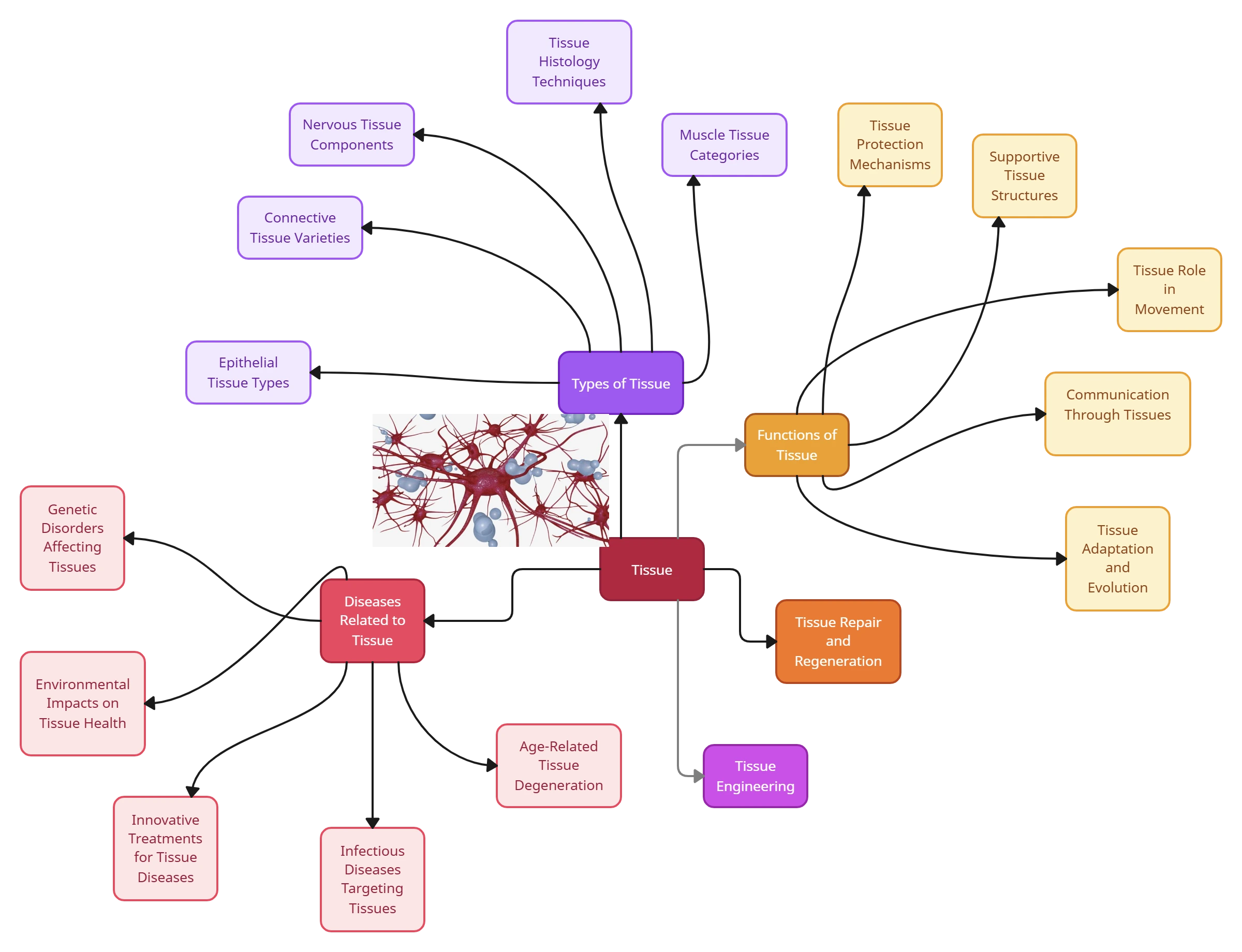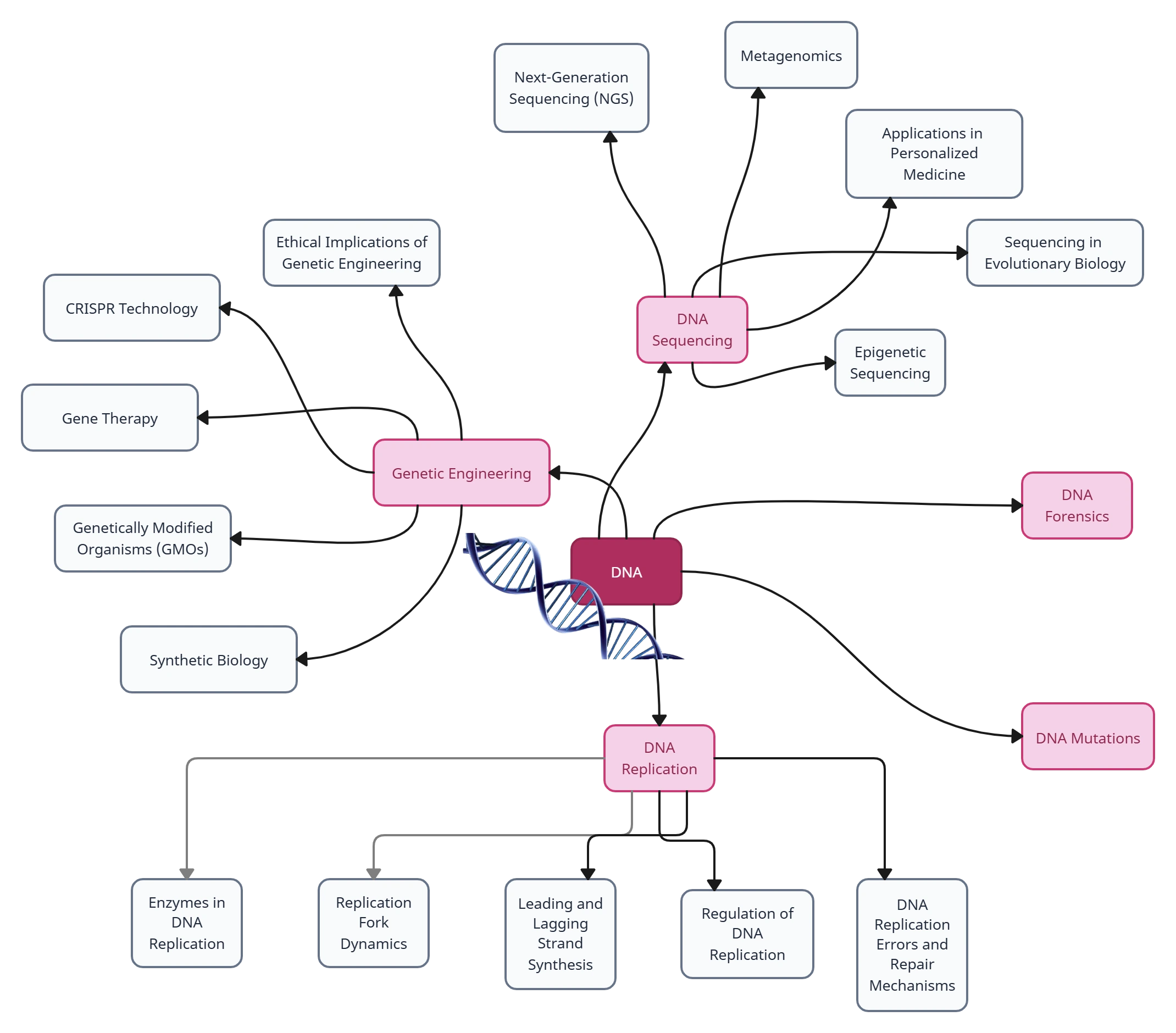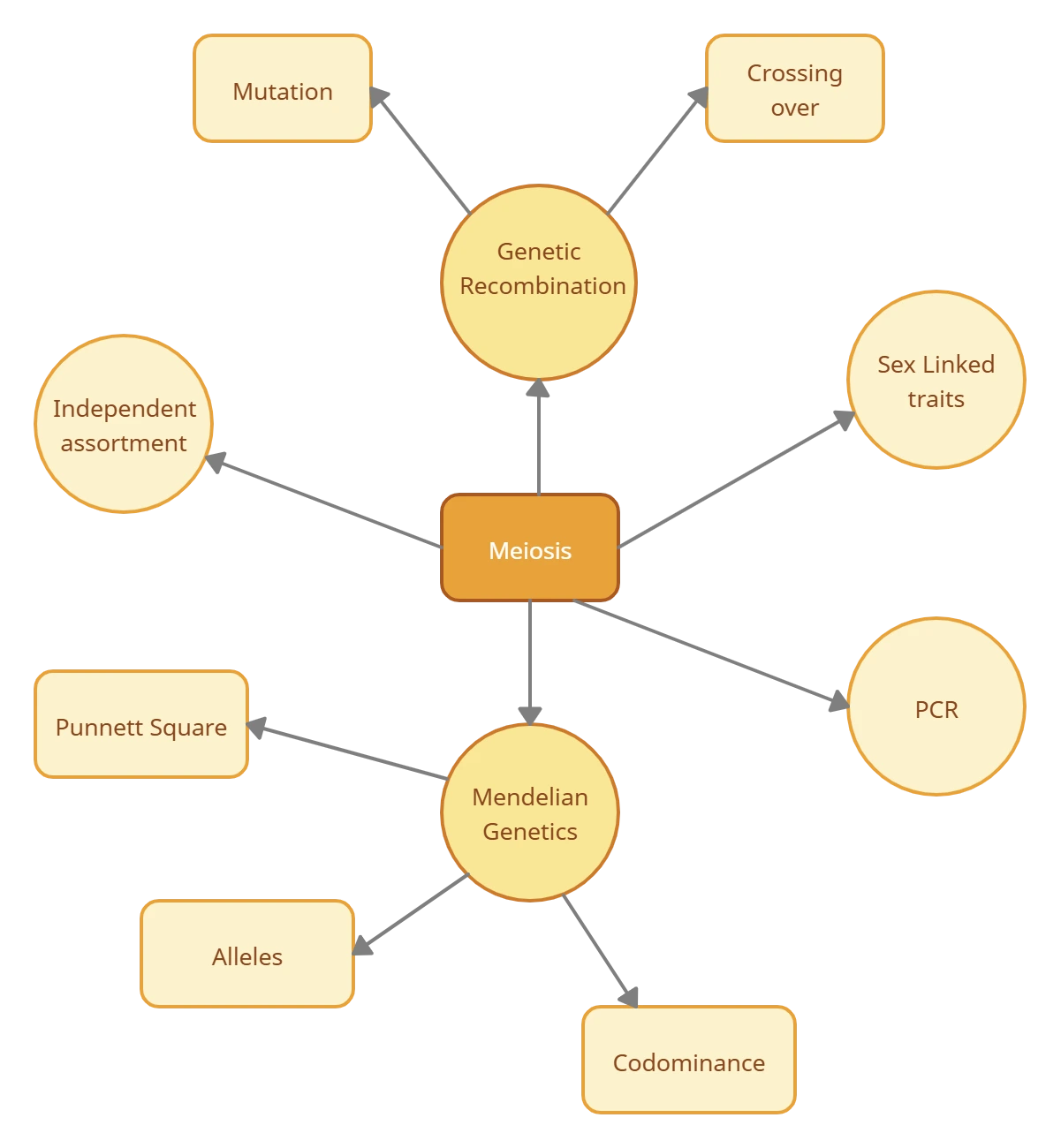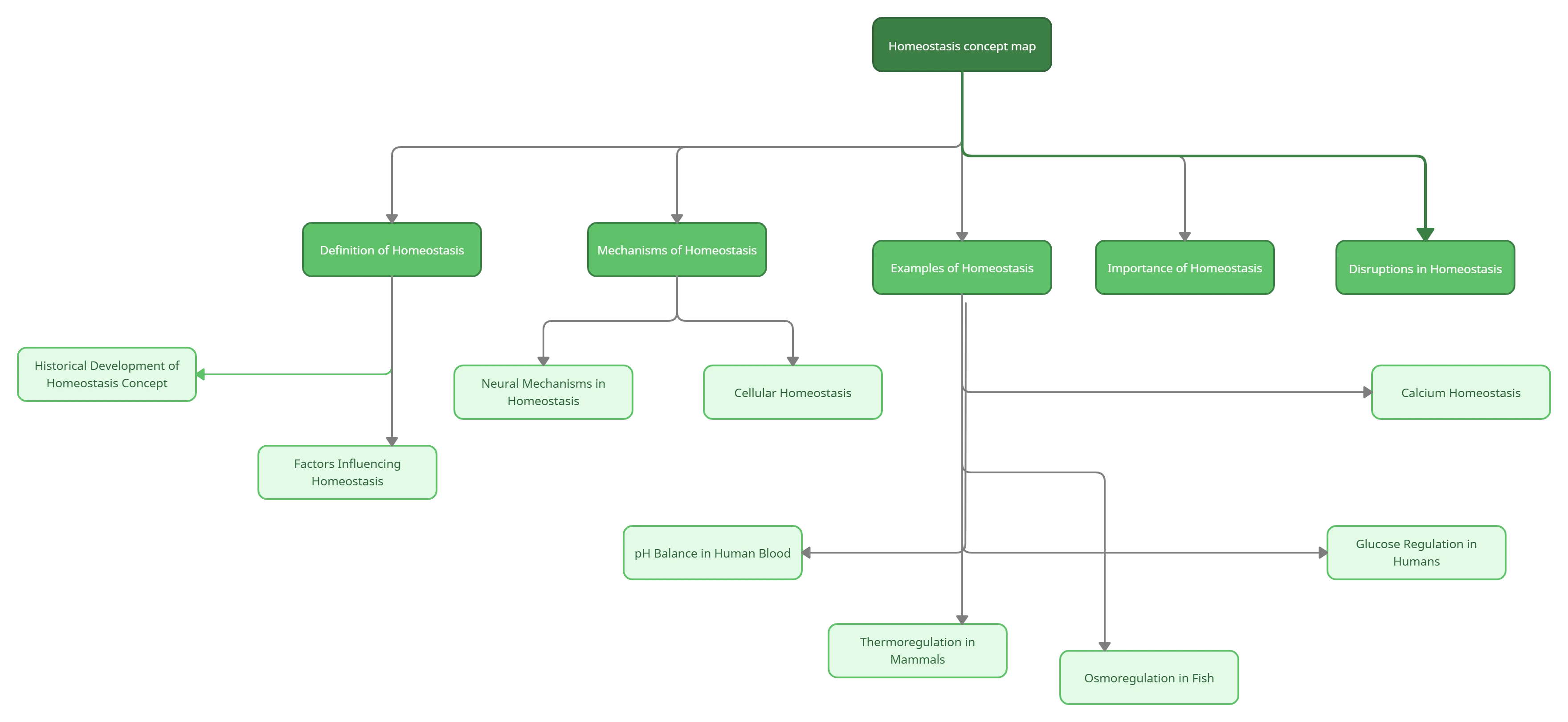Learning new topics can sometimes feel overwhelming, especially when there’s a lot of information to remember. That’s where concept maps comes in. In this guide, we’ll explore concept map examples for students that can make learning simpler and more effective.
Concept Map Examples for Students
In this section, we’ll dive into concept map examples for students that can simplify learning and make studying more effective.
Concept Map Examples for Biology
Biology concept maps help students understand living organisms, their functions, and their relationships with the environment. They break down complex topics like the human body, ecosystems, genetics, and cell structures into clear, visual diagrams. These maps make it easier to see connections between biological processes and help with memorizing key concepts for exams and assignments.
Concept Map Examples for Mathematics
Math can sometimes feel overwhelming, but concept maps help simplify it by visually organizing formulas, equations, and problem-solving methods. Whether it’s basic arithmetic, algebra, geometry, or calculus, concept maps in mathematics show how different math concepts are related. They help students grasp patterns, rules, and step-by-step solutions in an easy-to-follow way.
Concept Map Examples for Science
Science concept maps cover a wide range of topics, from physics and chemistry to biology and earth sciences. They help students organize scientific concepts, processes, and experiments by showing how they connect. Concept maps in science are great for understanding systems like the water cycle, photosynthesis, or the structure of an atom, making science more engaging and less confusing.
Concept Map Examples for Psychology
Psychology concept maps help students explore human behavior, emotions, and cognitive processes. They break down complex ideas like brain functions, personality theories, and psychological disorders into easy-to-follow visual representations. This helps students connect different psychological concepts and understand how they influence each other.
Concept Map Examples for Geography
Geography concept maps help students visualize physical and human geography topics, such as landforms, climates, natural resources, and population patterns. They show how different geographic factors interact, making it easier to understand global issues like climate change, migration, and ecosystems.
Concept Map Examples for Chemistry
Chemistry concept maps help students organize elements, chemical reactions, and scientific principles. They show how atoms, molecules, and compounds interact, making it easier to understand periodic trends, bonding, and chemical equations. These maps simplify complex chemistry topics and help students retain information more effectively.
Concept Map Examples for Examples
History concept maps help students connect historical events, timelines, and key figures. They organize causes and effects, showing how past events shaped the world today. Whether it’s mapping out the American Revolution, world wars, or ancient civilizations, these maps make history more structured and easier to understand.
Concept Map Examples for Physics
Physics concept maps break down fundamental laws, forces, and principles that explain how the world works. They help students visualize motion, energy, electricity, and other physics concepts by linking equations and real-world applications. This makes it easier to grasp challenging topics like Newton’s laws or quantum mechanics.
Concept Map Examples for Social studies
Social studies concept maps cover a variety of topics, including government, economics, culture, and current events. They help students see the relationships between different social structures, historical movements, and global issues. By organizing key concepts, these maps make learning about society more engaging and meaningful.
Concept Map Examples for Physical Education
Physical education concept maps help students understand the importance of exercise, sports science, and healthy living. They break down topics like body movement, fitness training, and nutrition, showing how they impact overall health. These maps can also be used to explore strategies and techniques in different sports.
Concept Map Examples for Nursing Students
Nursing concept maps help students connect patient symptoms, diagnoses, treatments, and nursing interventions. They are especially useful for understanding care plans, medication management, and emergency responses. By organizing complex medical information visually, nursing concept map examples help nursing students develop critical thinking and decision-making skills in patient care.
Using Creately to Create Concept Map Examples for Students
Creately’s concept map maker is a user-friendly online tool that helps students create clear and organized concept maps, making learning more effective. With its intuitive design and powerful features, students can easily visualize complex information and see how different ideas connect.
Dedicated shape library for concept maps
Creately provides a specialized shape library designed specifically for concept maps. You can choose from a variety of shapes, including circles, squares, and connecting arrows, to organize your ideas clearly and logically. And with the Plus Create features, it makes it a breeze to create concept map examples for students.
Integrated notes
With integrated note-taking, you can add detailed descriptions and explanations to each concept within your map. This feature helps to deepen your understanding and allows you to add context without overcrowding your concept map examples for students.
Real-time collaboration
You can collaborate with classmates in real time, making it easier to work together on projects or study sessions. This feature is perfect for group study or class assignments, where input from multiple students is needed.
Presentation mode
With Creately’s presentation mode you can transform your concept map into a dynamic presentation. This feature allows you to present your map in a clean, clear format without distractions, making it ideal for class presentations or study reviews.
Smart formatting and design
Creately provides smart formatting tools that automatically adjust your map as you add or remove elements. You can easily customize colors, fonts, and layouts to create concept map examples for students that are visually appealing and easy to read.
Pre-made templates
If you’re short on time, Creately offers a wide range of pre-made concept map templates that you can customize. These templates help you get started quickly and give you a structured foundation to work from.
Rich media integration
Creately allows you to enrich your concept maps by adding images, links, and videos to your concept map examples for students. You can attach relevant media to concepts, making your map more interactive and engaging, while providing additional context to the information you’re studying.
Multiple export options
Once your concept map examples for students are complete, you can download, print, or share them in various formats, such as PDF, PNG, or SVG. This flexibility allows you to use your maps in different formats for studying, printing, or sharing with others.
FAQs on Concept Map Examples for Students
How can concept maps help with studying?
Can I use concept maps for all subjects?
Can concept maps be used for group projects?
Why Use Concept Map Examples for Students?

